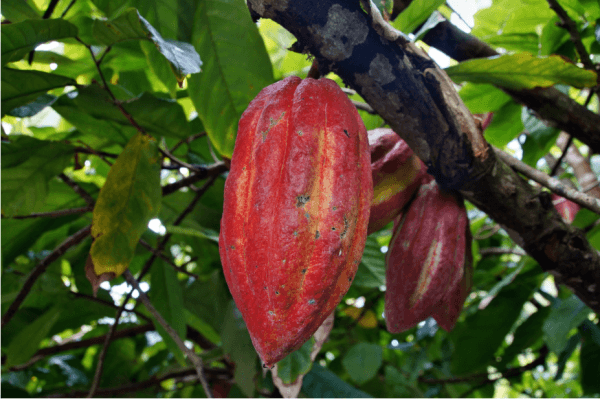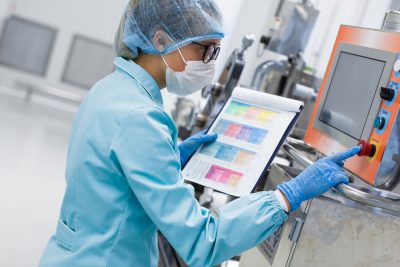Cocoa Safety: Focus on Process Validation
Most of us will have enjoyed the delicious taste of chocolate in the form of bars, candies and pastries, but perhaps given little thought to the long process involved in developing its prized flavours from cocoa. Chocolate production starts with the harvesting of cocoa beans in the wet lowland tropics of Central and South America, West Africa and Southeast Asia. Post-harvest processing has one of the biggest impacts on cocoa quality and, consequently on cocoa taste. This stage involves removing the beans from the pods and allowing them to ferment and dry for several days. 
During this time, additional natural contamination of the beans may occur, via the soil itself or from other sources, such as birds. This article discusses the essential role that process validation plays in ensuring the safety of cocoa products.
PATHOGEN INACTIVATION IN COCOA
The main pathogen of concern in cocoa is Salmonella. It can survive for long periods of time in low moisture foods like cocoa; often up to several months, and sometimes even years. The risk of an outbreak of foodborne illness is accentuated by the low infective dose of Salmonella. Just a few cells can make a person sick. In addition, contamination with Salmonella is generally very sporadic. It means that only a few grams of cocoa within thousands of kilos may be contaminated. This makes it very hard to detect Salmonella using traditional sampling plans.
Fortunately, cocoa processing involves several stressing steps for Salmonella –, including nib- or bean-roasting for example. The roasting step applies heat to the cocoa with an optional addition of steam or potash solution in order to develop the desired flavour. The heating stress applied to the cocoa ultimately aids the destruction of Salmonella. Taking measurements that ensure the roasting step is capable of killing a sufficient quantity of Salmonella in a constant, reproducible way is key to assuring the safety of cocoa. This is called Process Validation.
COCOA PROCESS VALIDATION
Using the example of a well-recognised Salmonella kill step in cocoa: roasting; a standard performance criterion for cocoa roaster validation is to achieve a 6-log decrease in Salmonella. This means that a roaster will be capable of killing 99.9999% of the Salmonella bacteria in the cocoa. The use of a Salmonella surrogate to validate the efficacy of roasting is vitally important to the cocoa industry. Surrogates are harmless bacteria that mimic the behavior of foodborne pathogens. Given their innocuous nature, they are used directly within the factory to “simulate contamination” and consequently test the efficacy of processing systems.
Continuing the roaster validation example, the first step is to inoculate cocoa samples with the Salmonella surrogate. And in order to prove a 6-log reduction, a high inoculation level must be achieved -, approximately 8-log CFU/g or 100 million bacterial cells per gram. The cocoa samples are then distributed in the roaster for validation using “routine”, worst-case parameters. Post-roasting samples are collected and the surrogate is enumerated. If the counts are below 2-log CFU/g or 100 bacterial cells per gram, the test results are positive (ie the roaster was capable of inactivating 99.9999% (6-log) of the surrogate, and hence also of Salmonella, by correlation).
COCOA VALIDATION STUDIES WITH SURROGATES
Conducting proper validation studies with a Salmonella surrogate involves several steps.
Surrogate selection
The first step involves selecting an appropriate surrogate organism for the trials. In order to be considered compatible, a surrogate must demonstrate similar, slightly higher resistance than the pathogen of concern in the food to be tested, under defined processing conditions. Reviewing available literature is helpful when screening for appropriate surrogates.
Additional lab tests may be needed to verify compatibility. Novolyze has conducted intensive R&D to evaluate the use of surrogate organisms in cocoa. By way of example, the thermal profile of our surrogate for the validation of cocoa systems (SurroNov® 1834) has been verified in a wide range of cocoa matrices.
Establishing strong evidence of the correlation between the pathogen of concern and the surrogate is essential to assure the scientific robustness of the study.
Definition of worst-case configuration
The second step is to select a “worst-case” configuration on which to focus for the trials; taking into account both the cocoa matrices involved in the study and the processing parameters. Several intrinsic properties of the food being tested may affect pathogen inactivation. in the case of cocoa, water activity, moisture and fat content are key factors to evaluate.
Cocoa nibs with a higher fat/- lower moisture content will be more conservative in terms of pathogen destruction. Similarly, the validation should also focus on evaluating the worst-case processing parameters, which usually corresponds to the lowest exposure to the inactivation stress (ie, shortest processing time, lowest temperature, minimum level of potash solution injected or minimum steam addition).
In-plant trials
The third step involves conducting in-plant trials directly on the system being validated and critical parameters must also be evaluated at that stage. Here are some best practices to consider:
- A sufficient number of trials should be performed for each tested parameter. a standard practice in the industry is to execute three independent validation runs.
- A sufficient number of samples should be used for the tests. It includes non-treated control samples inoculated with the surrogate organism and non-inoculated control samples.
- It is highly recommended to record the time and temperature combinations achieved while executing the trials.
EXECUTING VALIDATION TRIALS

In most cases, it is possible to prepare samples of cocoa inoculated with the Salmonella surrogate and confine them in thermally-resistant bags or metal cages.
This approach reduces the total quantity of cocoa that is used for the trials and clearly identifies the inoculated product in the system. In order to assess process variability, a typical validation trial for cocoa roasting will include 10-15 microbial samples placed or distributed in the process. Three additional samples per trial will not be distributed and will serve as non-treated controls. Temperature mapping can be achieved by placing thermo buttons in thermal bags or metal cages with cocoa while performing the trials. Parallel temperature readings from the PLC enables correlation of the process temperature with the temperature at the core of the cocoa product.
Depending on the background microflora of the product, the enumeration of microbial samples is obtained by either using selective or non-selective media (total plate count). Whenever possible, a non-selective enumeration method should be used. The highest concentration for the treated samples is compared with the lowest concentration for the control samples. It enables to calculate the log reduction and thus assess the efficacy of the system to contain pathogenic organisms. A validation report can then be prepared, documenting all the information related with the validation (please contact us for more information).
WHAT’S NEXT?
Cocoa process validation constitute a cornerstone of a food safety plan. System revalidation should be done when a change in the processing configuration occurs that could affect the worst-case scenario; such as, shorter exposure time to heat, lower temperature, higher fat formulation etc. If no change has been made, a standard practice in the industry is to revalidate each system every three years. It is worth noting that monitoring the equipment between two validations is also essential to assure the safety of processed cocoa (control of time/temperature combinations, etc). New automated solutions exist that can simplify theses procedures.
References:
- Podolak, Richard et al. “Sources and risk factors for contamination, survival, persistence, and heat resistance of Salmonella in low-moisture foods.” Journal of food protection 73 10 (2010): 1919-36 .
- https://www.icco.org/
- https://www.statista.com/statistics/263855/cocoa-bean-production-worldwide-by-region/
- https://www.fda.gov/Food/GuidanceRegulation/GuidanceDocumentsRegulatoryInformation/ucm517412.htm
